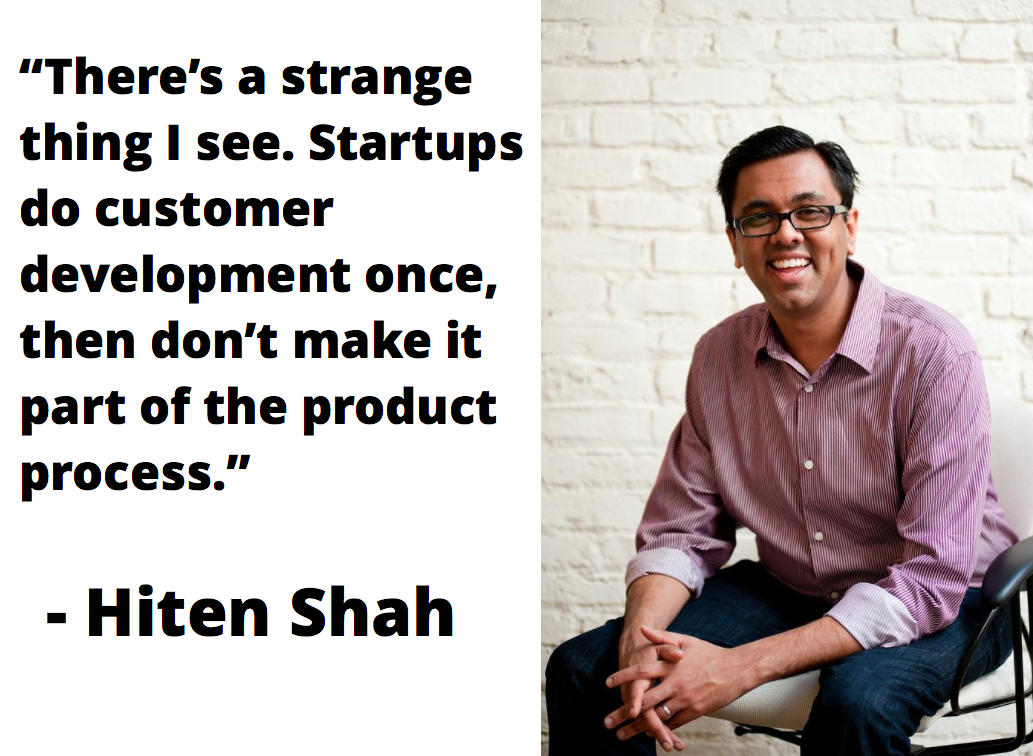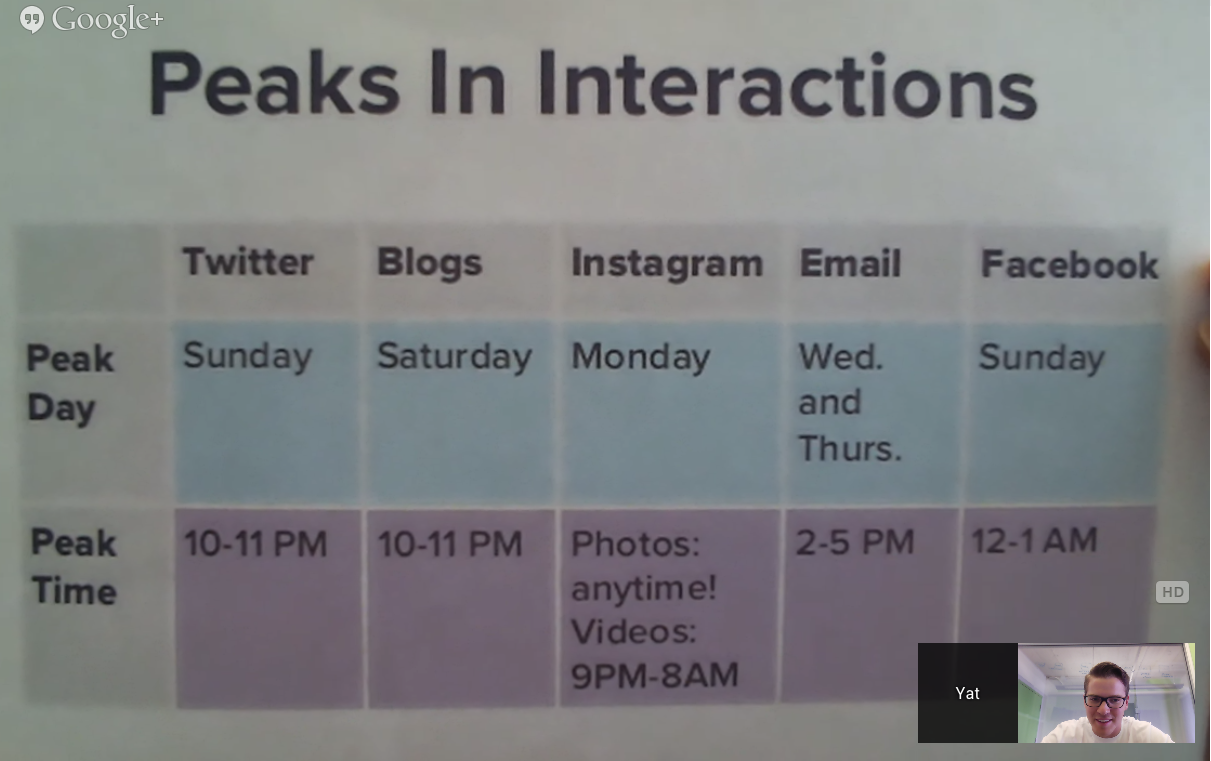At Buffer, we’ve recently made a big change to how we build products and use the Lean Startup methodologies much more closely.
It followed what I’d call a phenomenon that Hiten Shah, one of our closest advisors mentioned to us in a mentoring session:

At Buffer, we have always taken a lot of pride in thinking that we were following the Lean Startup methodologies very closely. That’s why this line from Hiten hit me like a brick. We weren’t really being lean and avoiding waste if we weren’t doing extensive customer development.
From that day a few months ago, we started to double down and put almost every single assumption or hypothesis of our business through customer development interviews first. And I believe it’s been one of the best changes we’ve made recently.
I’ve personally never felt closer to our customers and their problems.
Setting up customer development interviews faster
One particular way we do customer development is through Twitter.
After picking up a copy of Cindy Alvarez’ latest book “Lean Customer Development,” I discovered that there’s a whole science behind getting interviews with customers right in order to learn about their problems. I can’t recommend this book enough.
One of the things Cindy and Hiten mentioned to us is that doing these interviews can be very time intensive. For various reasons, it’s recommended to get a targeted email list of your customers, email them, and set up calls. That by itself would take me about 1-2 days of work every time I wanted to do some interviews.
I still believe that this longer method is very powerful and maybe even superior. At the same time, I’m a big believer in Facebook’s mantra that “done is better than perfect.”
So instead of taking half a week emailing and scheduling calls, I wanted a way to get immediate customer insights. So I sent a Tweet through our Buffer account to see if any customers were available for a Google Hangout. I tried my best to target customers and let them self-select based on our requirements:
Are any Buffer Extension users who share a lot of articles available for a Google Hangout now? Would love your feedback! -Leo
— Buffer (@buffer) September 9, 2014Within a few minutes I was chatting with someone and learning about their problems sharing articles on social media.
Here is one of my highlights: When trying to learn more about how people set up their times for social media sharing, someone had printed off a cheat sheet for their best times to share. There are few things that validate a feature hypothesis more than something like this:

Just like that, I was able to have 4-6 amazing calls with customers within 1-2 hours and then give some valuable feedback to the product team. That means I cut the time down that it’d normally take to do this (about 3-5 days) by over 90%.
An iteration to be more organized: Google Calendar slots
Rodolphe, who is doing customer development together with me on other parts of the product, took this method and improved it a lot further. Instead of jumping on calls right away, he would schedule them back-to-back for the next day:
Hi there! Would any user be open to jump in a quick Skype with me tomorrow to help us improve Buffer? Thanks a ton! Rodolphe — Buffer (@buffer) September 25, 2014
This turned out to be less stressful and much more organized than my original method, although it would take slightly longer.
@buffer … 8 different time slots are available http://t.co/oRokNaq86U – looking forward to chatting with you :) Thanks! Rodolphe
— Rodolphe Dutel (@rdutel) September 25, 2014I like this newer method from Rodolphe a lot, and I believe I might make that the default for my next few sets of calls, too.
A few considerations for Twitter customer development
Right off the bat, I believe that there are some limitations to this method that I wanted to point out.
- With Tweets, it’s hard to be as targeted as an email outreach might be in comparison. Sometimes we want to only speak with Buffer for Business customers that have signed up in the last week, for example.
- Another pretty obvious one is that you’ll need somewhat of an established and engaged audience. If I were to guess, you might need about 10,000 followers to begin with.
- Another thing that Cindy stressed in her book is to have sufficient time in between calls to organize your thoughts and put summaries together. With this method, where you optimize the amount of calls, it might be harder to be as organized as Cindy recommended.
Even with these limitations, I still believe that you’ll get 80% of the results by doing far less than even 20% of the work.
With this process, I feel that we’re gaining a deeper understanding of our customers that will make us more able to solve their social media challenges and save them time. (Ready to save time with social media while driving more traffic and engagement? Try Buffer for free!)
I’m really excited to share more about our newfound love for customer development and other elements of the lean startups. Let me know in the comments below if you have any questions or things I can write about next.
Interested in joining Buffer as we get to know our customers and work hard to make products they’ll love? We’re hiring!
Try Buffer for free
190,000+ creators, small businesses, and marketers use Buffer to grow their audiences every month.


